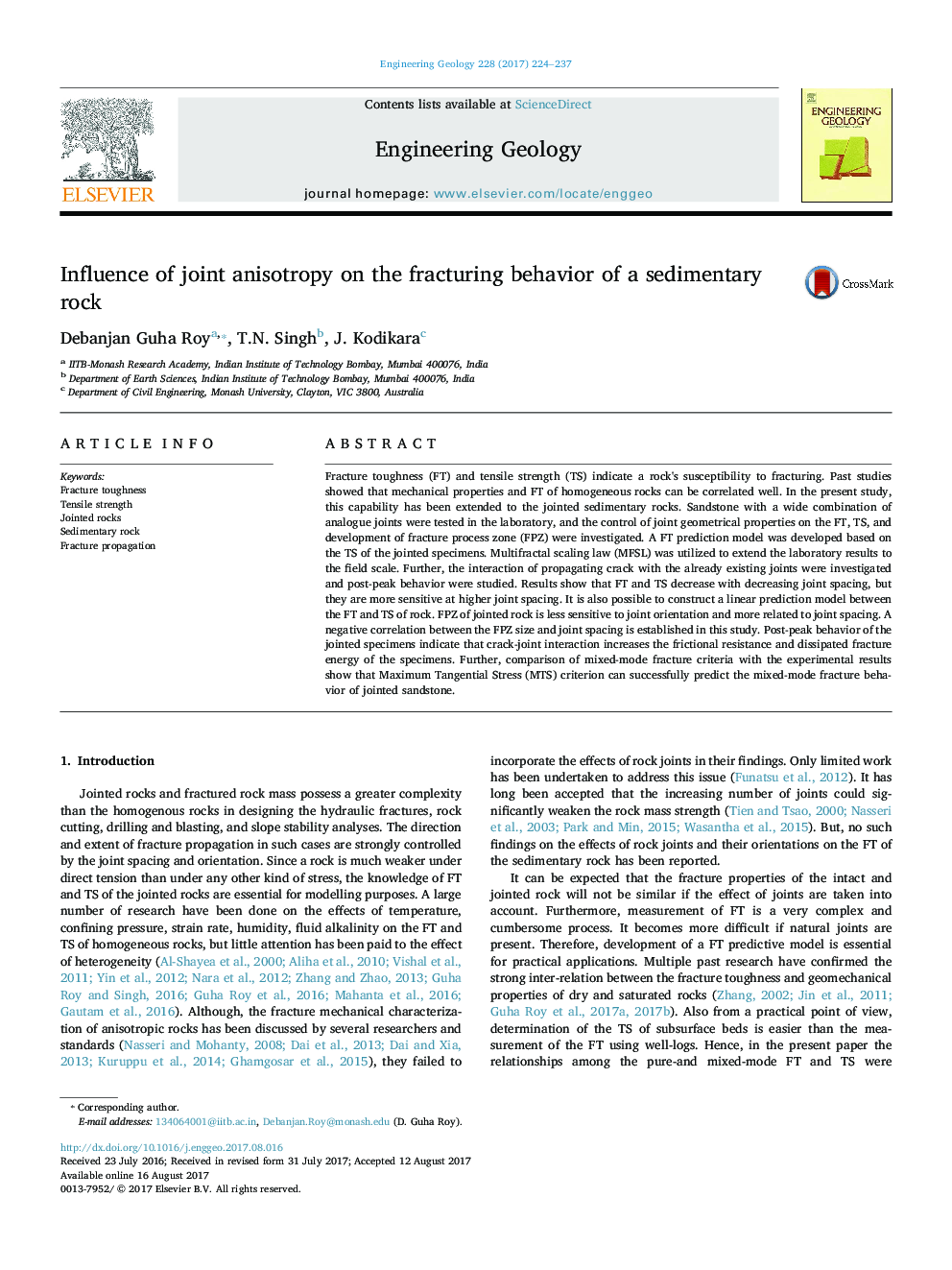| Article ID | Journal | Published Year | Pages | File Type |
|---|---|---|---|---|
| 5787522 | Engineering Geology | 2017 | 14 Pages |
Abstract
Fracture toughness (FT) and tensile strength (TS) indicate a rock's susceptibility to fracturing. Past studies showed that mechanical properties and FT of homogeneous rocks can be correlated well. In the present study, this capability has been extended to the jointed sedimentary rocks. Sandstone with a wide combination of analogue joints were tested in the laboratory, and the control of joint geometrical properties on the FT, TS, and development of fracture process zone (FPZ) were investigated. A FT prediction model was developed based on the TS of the jointed specimens. Multifractal scaling law (MFSL) was utilized to extend the laboratory results to the field scale. Further, the interaction of propagating crack with the already existing joints were investigated and post-peak behavior were studied. Results show that FT and TS decrease with decreasing joint spacing, but they are more sensitive at higher joint spacing. It is also possible to construct a linear prediction model between the FT and TS of rock. FPZ of jointed rock is less sensitive to joint orientation and more related to joint spacing. A negative correlation between the FPZ size and joint spacing is established in this study. Post-peak behavior of the jointed specimens indicate that crack-joint interaction increases the frictional resistance and dissipated fracture energy of the specimens. Further, comparison of mixed-mode fracture criteria with the experimental results show that Maximum Tangential Stress (MTS) criterion can successfully predict the mixed-mode fracture behavior of jointed sandstone.
Related Topics
Physical Sciences and Engineering
Earth and Planetary Sciences
Geotechnical Engineering and Engineering Geology
Authors
Debanjan Guha Roy, T.N. Singh, J. Kodikara,
